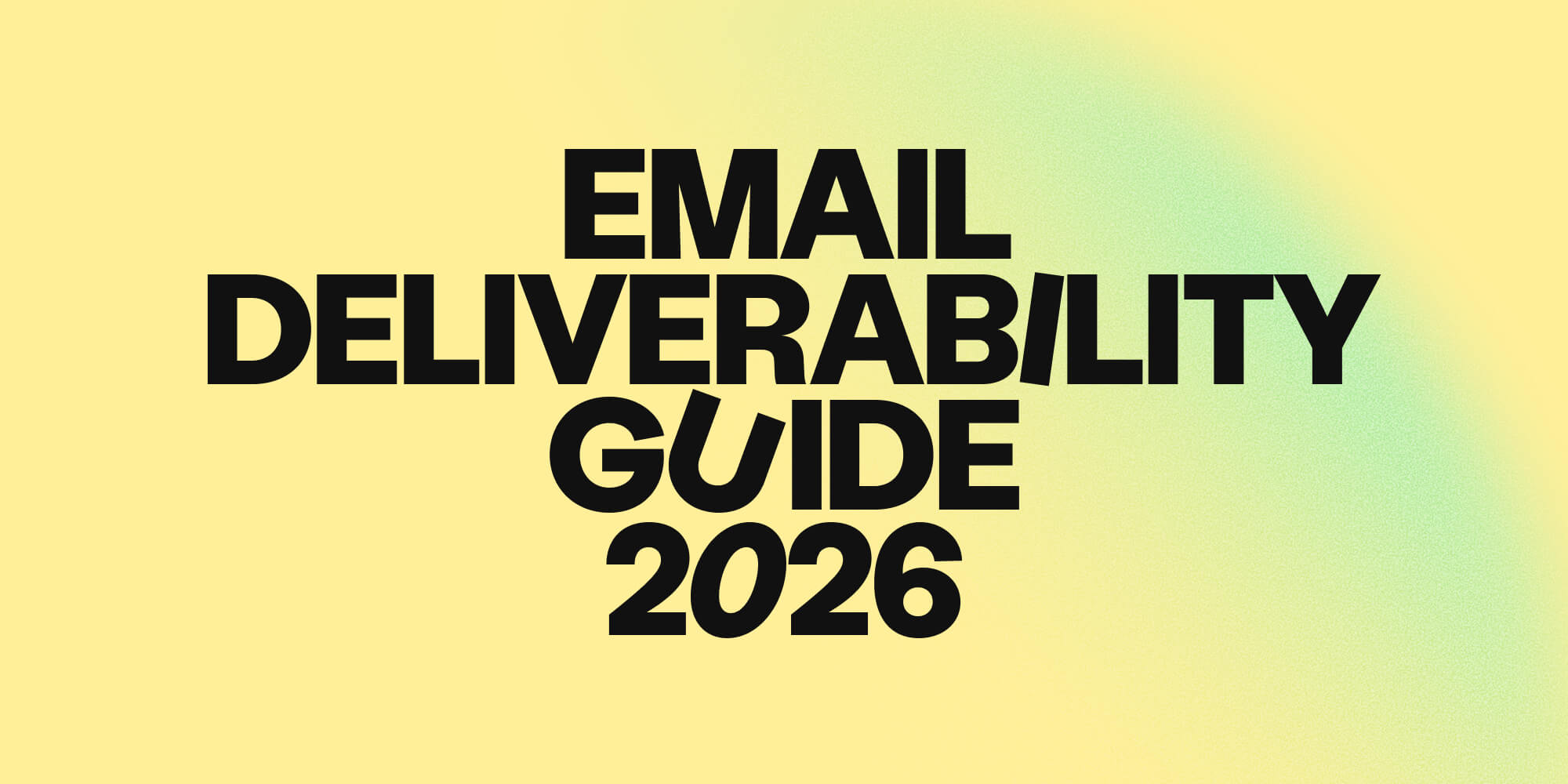BDR vs. SDR: What's the difference and which sales role is right for you?
•
March 31, 2024
.jpg)
How well do you know your sales acronyms?
Two of the most common salesperson acronyms refer to two of the most important roles in the sales process: BDR (Business Development Representative) and SDR (Sales Development Representative).
But what’s the difference? And how can you figure out which role would best suit you?
Let's look into the nuances of each role and uncover the pros, cons, and other distinctions that set them apart so you can understand how sales teams are structured and make more informed decisions on potential roles!
What is a BDR (Business Development Representative)?
BDRs are the foundation of your sales team. It’s their job to identify new business opportunities and nurture relationships with potential clients.
Responsibilities of a BDR (Business Development Representative)
BDRs excel in prospecting, utilizing strategies like hyper-specific outbound lead generation, cold-calling, emailing, and social selling to connect with prospects.
BDRs will often work closely with marketing teams because they are both responsible for fuelling the top of the sales funnel with highly-qualified leads. The best BDRs will be capable of sourcing large numbers of qualified leads and capturing their attention to start the buying journey.
Benefits of a BDR role
- Creative outreach: BDRs get to be innovative and creative in their approach to engaging new prospects.
- Direct impact: They play a crucial role in long-term business growth by generating new leads.
- Market insight: BDRs gain valuable insights into market trends and customer needs, which can be shared with marketing and product teams.
Pros and cons of being a BDR
Becoming a BDR requires you to be strategic, consistent, and incredibly patient.
Traditionally viewed as the entry-level position for a sales career, business development has become a specialized realm of its own and demands a unique mindset. BDRs don’t have time to agonize over individual prospect engagements; instead, they have to be capable of moving fast and pivoting quickly to keep leads flowing into the sales funnel.
To be a BDR, you have to be resilient enough to deal with having the phone hung up on you or getting negative replies. At the same time, you have to be capable of thinking strategically, always looking for ways to refine your outreach tactics to lay the foundations for long-lasting customer relationships.
- Pros: BDRs have the opportunity to be creative and innovative in their outreach whilst directly contributing to long-term business growth.
- Cons: The role requires patience and persistence in cold outreach, often facing rejection and having to find large numbers of leads. There’s also less immediate satisfaction of seeing prospects progress towards a deal because BDRs are only involved at the start of the buying journey.
What is an SDR (Sales Development Representative)?
SDRs are the next link in the sales chain. They engage with potential customers and qualify sales opportunities.
Responsibilities of an SDR (Sales Development Representative)
SDRs focus on inbound leads, responding to inquiries from marketing campaigns or following up on BDR-generated leads. They have more in-depth conversations with prospects to understand their buying priorities and pain points.
Benefits of an SDR role
- Focused engagement: SDRs handle warm leads, making their outreach more targeted and meaningful.
- Skill development: They start to develop key interpersonal and sales skills by having deeper conversations with prospects.
- Efficiency: By focusing on qualified leads, SDRs help streamline the sales process.
Pros and cons of being an SDR
Being an SDR requires a similarly resilient mindset, especially since you’ll having more in-depth conversations with prospects.
On top of this, SDRs have to be quick on their feet and comfortable handling tough questions to win prospects’ trust. The role suits people who are energetic and scrappy, not afraid to take risks and able to perform under pressure. SDRs will need to start developing more of the key interpersonal and psychological skills that are needed in sales to win prospects’ trust and convince them to move along in the buying journey.
- Pros: Immediate impact on sales, focused on high-quality leads, development of advanced sales skills.
- Cons: High-pressure environment, need for quick decision-making, handling challenging prospects.
Key differences between BDRs and SDRs
Leads vs. relationships
- BDRs: Primarily engage in outbound prospecting, targeting cold leads and initiating conversations.
- SDRs: Focus on inbound activities, handling warm leads, and qualifying opportunities for AEs to close.
Quality vs. quantity
- BDRs: Handle a higher quantity of cold leads, requiring resilience and strategic thinking.
- SDRs: Manage fewer but more qualified leads, focusing on quality engagements.
Inbound vs. outbound
- BDRs: Concentrate on outbound leads generated through cold outreach.
- SDRs: Focus on inbound leads from marketing efforts and follow-ups.
Sales vs. Business Development
- BDRs: Develop new relationships with potential clients and bring them into the sales funnel.
- SDRs: Sell products or services to qualified prospects, pushing them further down the sales funnel.
Skills transferability between BDRs and SDRs
Despite their differences, the best BDRs and SDRs share a lot of valuable skills that makes transitioning between the roles - and on to other sales roles - extremely fulfilling!
These include:
- Strategic planning: The ability to identify market opportunities and crafting strategic approaches to penetrate new territories.
- Outbound prospecting: Being comfortable with initiating contact with potential clients through various channels, including cold calling and email outreach.
- Relationship building: Nurturing long-term relationships with clients, fostering trust and loyalty over time. This skill is not only useful in sales; it also translates well into roles that prioritize client management and retention, such as customer success or account management.
- Leadership potential: By demonstrating initiative and resilience in pursuing new opportunities, BDRs and SDRs showcase their potential for leadership roles within the organization.
- Organization: Leveraging integration and automation tools to streamline processes and organize tasks for maximum efficiency.
- Effective communication: The art of communicating product value propositions and qualifying leads efficiently.
- Lead qualification: Having a keen eye for identifying qualified leads and prioritizing them based on their potential value.
- Collaboration with marketing: Being proactive and innovative in cross-functional collaboration and alignment in pursuit of shared company goals.
- Career advancement preparation: All sales reps learn the importance of setting long-term career goals and seeking mentorship and training opportunities to achieve them.
BDR or SDR: Which role would suit you best?
If you’re new to the world of sales, make sure you do your research into the BDR or SDR positions you’re considering so you understand the exact expectations of the role. Take into account the various pressures and challenges tied to each role and make sure you look for roles you think would suit your personality and professional interest.
Nevertheless, you shouldn’t forget that there is a lot of skill overlap between the roles, and whether you choose to transition between them or on to Account Executive (AE) or Customer Success Roles, you’ll be well set for a range of exciting career opportunities!
If you’re interested in learning more about being a BDR, SDR, or building a sales career, check out our blog with Molly - Amplemarket’s first rep to transition from BDR to SDR to AE!
The best tools for BDRs and SDRs
Succeeding as a BDR or an SDR is a whole lot easier when you have the right technology on your side. In Amplemarket, you’ll find everything you need to hit quota and maximize your productivity with integrated prospecting, social selling, engagement, dialing, and deliverability support tools. It’s every sales rep’s best friend - request a demo to see it in action!
FAQs on BDR vs SDR
Is BDR better than SDR?
Choosing between a BDR and SDR role depends on your strengths and career goals. An SDR role is ideal for those who thrive on high-volume outreach, and enjoy the challenge of generating their own inbound leads even if it means repetitive work. Meanwhile, the BDR role suits individuals who prefer building strategic campaigns and developing targeted approaches to engage and qualify outbound leads.
Is a BDR a sales role?
Absolutely. BDRs are an integral part of the sales team, focusing on generating leads that the sales team can later convert into paying customers. They serve as the first point of contact with potential buyers and play an important role in qualifying sales opportunities and booking meetings for other reps to engage.
How long should you be a BDR?
The typical tenure for a BDR can vary, but it often serves as an entry-level role in sales. Many BDRs spend 1-2 years in the position before moving up to roles like SDR or Account Executive (AE). If reps are looking for these promotions, they should use their time as a BDR to learn as much as possible about how the sales funnel works and how the SDRs and AEs nurture their leads. However, there’s no fixed BDR tenure, and plenty of people will choose to specialize in top-of-funnel outbound lead generation in the long term!
Are SDR jobs worth it?
Yes, SDR roles are invaluable for gaining hands-on experience in sales. They provide a solid foundation in understanding customer needs and sales strategies, paving the way for career advancement in sales.
Subscribe to Amplemarket Blog
Sales tips, email resources, marketing content, and more.










